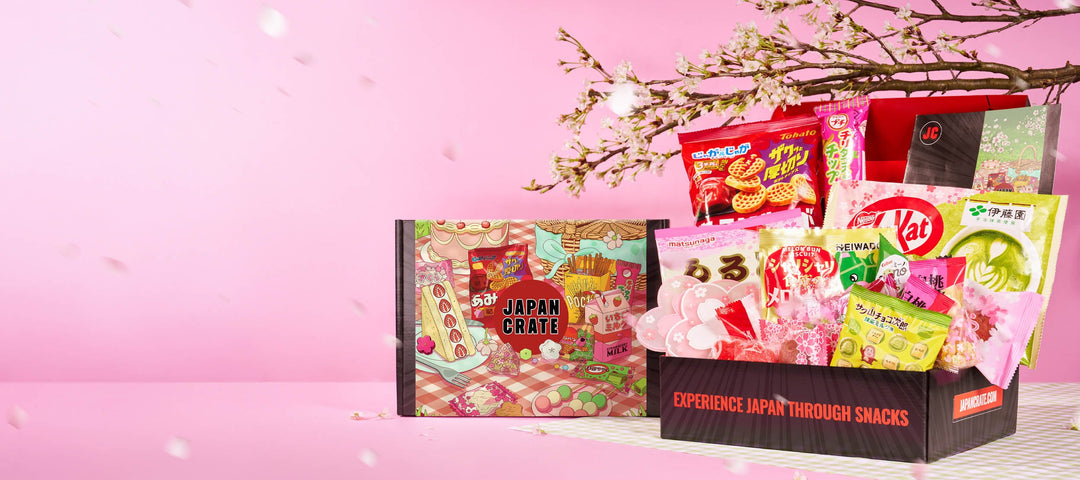How to Get Marble out of Ramune Bottle?
Ramune is a popular Japanese beverage and a must-try for any Japanese enthusiasts, whether for its distinctive ramune Codd-neck bottle capped with a glass marble or the drink's wonderful lemon-lime flavor. These Japanese ramune drinks have a rich culture, from their humble beginnings in small, local regions of Japan to their current prominence as a representation of contemporary Japanese popular culture and summers. The fact that Ramune drink is still in demand today despite having been produced decades ago is what makes it so special. There are already more than 30 flavors, including strawberry, orange, blueberry, banana, and more. Read on to know more about this popular Japanese drink and discover how to get the marble out of Ramune.
What is Ramune?

The Japanese carbonated soft drink ramune is legendary. The English word "lemonade," which the Japanese have adopted, is where the word "ramune" originates. When the bottle is filled with a carbonated beverage and the marble is pressed against the rubber ring at the top of the bottle, the carbonation is sealed in. Ramune soda is only ever served in the iconic bottle that houses the bottle's colorful plastic top, which is used to help press the marble into the soda. Also, the glass bottle has a distinctive top that keeps the marble in place, so it does not fall into the drink. Even though codd-neck bottles are largely out of fashion, Ramune is one of the very few commercial soft drinks in the world that still employs marble in a drink.
The original ramune flavor is a lemon-lime bubble gummy flavor, and many people love the distinctive original taste. Yet more and more ramune flavors have emerged on the market throughout time. They include strange and fantastic flavors like french fries, chili, or even clam chowder, as well as fruity flavors like yuzu, lychee, strawberry, blueberry, and matcha, a traditional Japanese delicacy.
History of Ramune

Many theories exist regarding the country's initial introduction of Japanese ramune soda. One theory holds that American Navy Captain Matthew Perry gave the first serving of ramune to shogunate officials in 1853. An alternative account claims that Hannbee Fujise started selling ramune in Nagasaki in 1865 under the name "lemon water," or remon sui. Another theory holds that the first ramune was introduced to the Kobe Foreign Settlement by Alexander Cameron Sim, a Scotsman chemist, and trader.
Nonetheless, Japanese ramune has been a staple of Japanese culture since the first iteration of the beverage was introduced in 1876. The beverage was originally known as Mabu Soda, which translates to "marble soda," and was intended to be used medically to prevent cholera. This carbonated soft drink's original flavor had a lemon-lime flavor. It didn't take long for the codd-neck bottle and well-known Japanese beverage to gain popularity abroad, giving rise to the iconic Ramune bottle we see today. In fact, many big-box supermarkets now carry the increasingly popular beverage in their Asian aisles, saving customers the trouble of traveling to specialty Asian grocers. Ramune's unique flavor surely adds to its appeal, but the drink wouldn't be the same without its marble-sealed soda bottle.
Why Ramune Has a Marble in it?

The marble in Ramune soda is just as important as the flavor. In fact, ramune was first called "mabu soda" (marble soda). Ramune stands apart from other soft drinks thanks to its Codd-neck bottle with the marble top. A Codd-necked traditional ramune bottle is sealed with a marble. This distinguishing feature of the soda is well-known. You might be asking why the marble is present on most ramune drinks, and while some people might view it as a fun but pointless addition, it actually serves a purpose.
Hiram Codd, an English engineer and inventor, discovered in 1872 that a glass marble put into the neck of a glass bottle might establish a reliable seal for soda bottles without using a stopper or cork. He used the pressure of the soda's bubbling to force the marble against the upper neck of the soda bottle. With a plunger, you apply pressure to the marble in the bottle's neck until it pops to the ground. Several people used this practice until the 1930s. Nonetheless, despite technological developments, Japan has kept up with the old ways, and many visitors consider popping the ramune marble to be a must-do activity.
How To Get the Marble in Ramune?

Many children will probably wish to collect the marbles in the neck bottles of Ramune because they can become a fun souvenir they can use in games or add to their collections. Fortunately, there is a method for removing the marble from a single ramune soft drink bottle. The issue is that the traditional glass Ramune bottle is very tightly sealed. A choking hazard would result from the marble falling out of the cap. Hence it is pre-sized to prevent this from happening.
The process of removing the opener and opening the seal may seem simple, but if you've never done it before, it can be confusing. To begin, place your ramune bottles on a flat, secure surface, such as a kitchen counter or tabletop, so that you can grasp them firmly. Then, take off the bottle top's plastic covering and discard it in the trash. Next, take off the bottle cap. However, ramune caps come in two different materials: plastic and metal.
Before attempting to unscrew the plastic top, thoroughly wipe out the bottle-neck with soap and water to remove any sweet and sticky soda particles. Then get a flathead screwdriver and a tiny hacksaw. By sticking the top of the hacksaw's blade into the bottle top, you should be able to make a very little cut in the plastic cap. Start cutting outside the plastic top and all the way around the top. The next step is to insert the flathead screwdriver into one of the cuts. Use muscle power and move your arm around; the cap should come off easily. The marble can tumble out of the bottle after the cap is removed.
Use the same two tools from before to cut the same slits in aluminum-topped bottles. As aluminum is typically rather soft, cutting it shouldn't require a very sharp saw blade. Either way, using the flathead screwdriver should provide enough leverage to easily remove the bottle's lid and let the marble falls right into your hand.
It's Japan Crate Time!
Try all the ramune flavors and get more marbles to add to your collection now! There are always more amazing flavors to try! From the basic lemon-lime dessert to the traditional Japanese sakura ramune! There are even more adventurous options like takoyaki or French fries ramune. You don't even need to search anymore where you can get these delicious ramune drinks. Visit Japan Crate now! Japan Crate offers a box of Japanese treats and drinks delivered to your home every month. Get your first crate right away!
Author Bio







Leave a comment